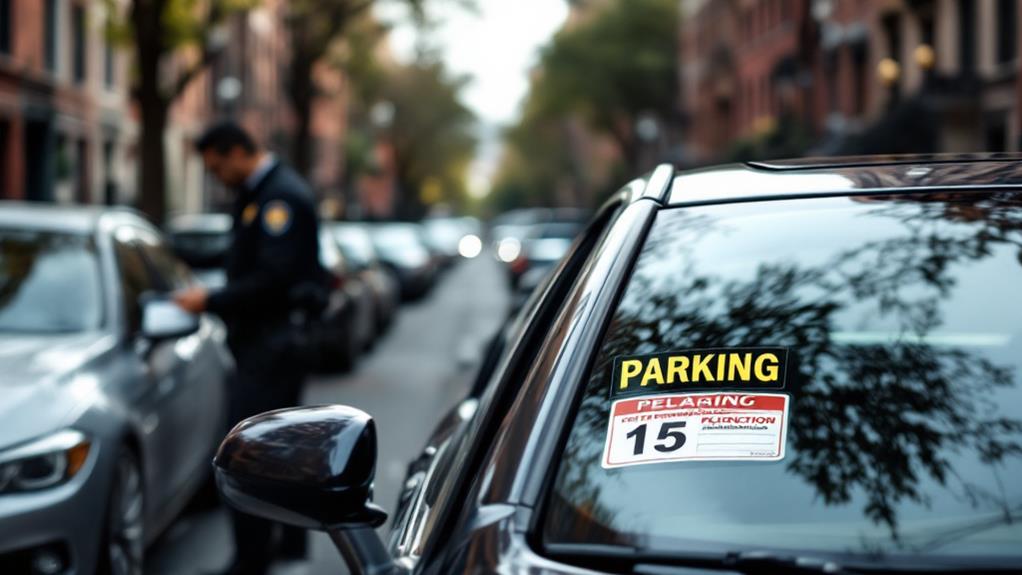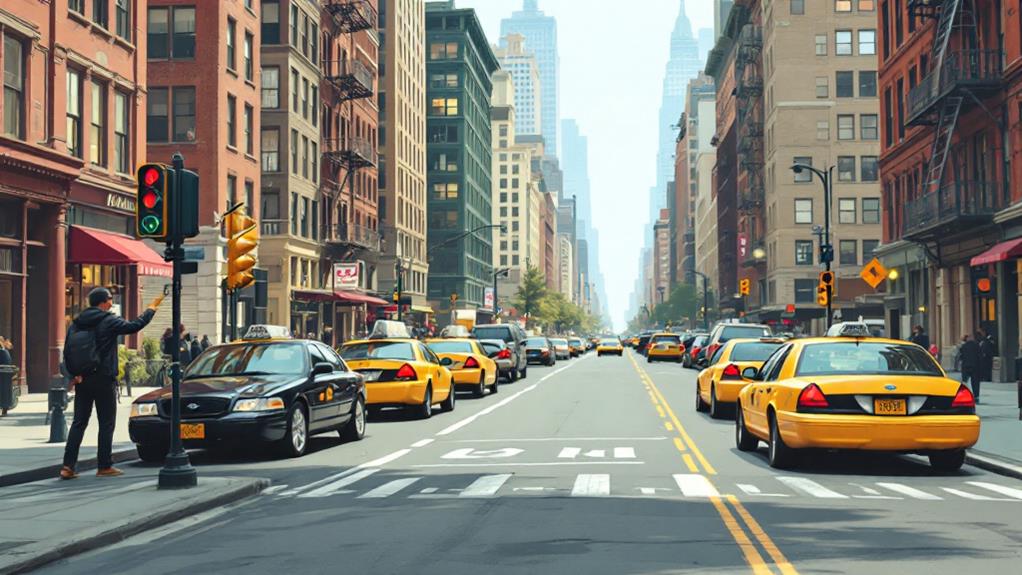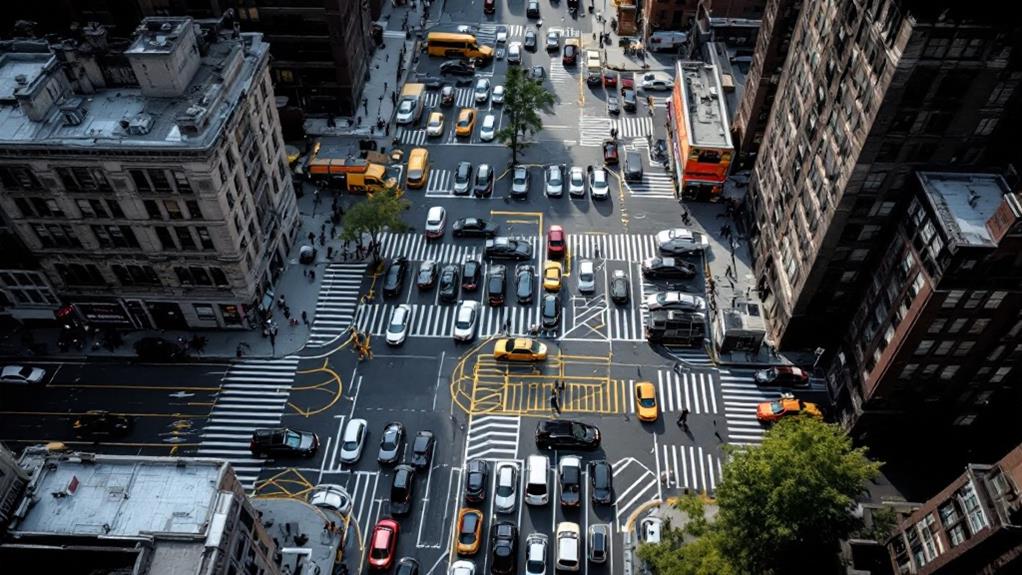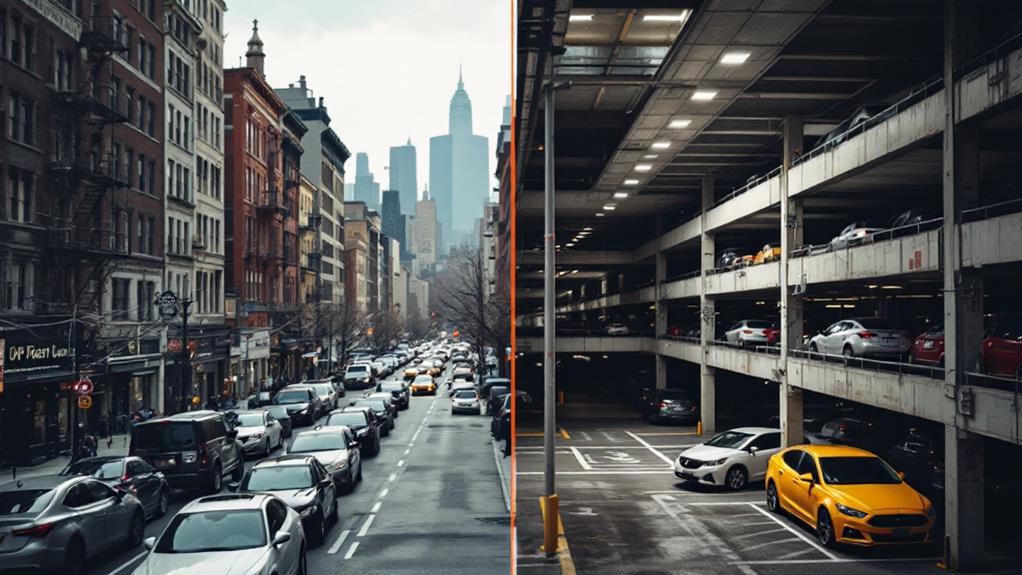The High Cost of Parking Near NYC's Train Stations
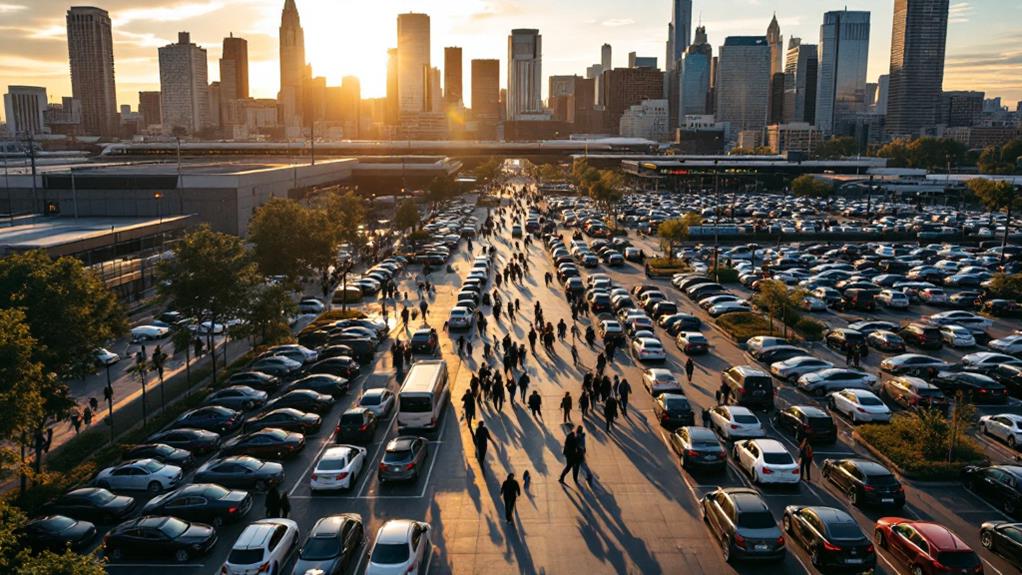
Parking near NYC's train stations can be a costly undertaking. You'll face limited spots and high rates, especially in Manhattan where daily parking can reach $60. Metro-North stations outside the city often require permits, while some offer free weekend parking. Outer boroughs like Brooklyn provide more affordable options, including free on-street parking in residential areas. Park-and-ride lots at Metro-North or LIRR stations offer a cost-effective alternative but come with restrictions. Hidden costs of station parking, such as environmental impact and reduced walkability, also contribute to the overall expense. Exploring alternatives and understanding the full image can help you traverse this pricey parking terrain.
The Parking Crunch at Metro-North
Despite the convenience of Metro-North trains, parking at stations outside New York City can be a headache. You'll find that parking spots are often limited, with some stations requiring permits while others offer free weekend parking. If you're planning an overnight or multi-day trip, you'll need to research each station's specific parking policies, as they vary widely.
When considering your options, it's imperative to weigh factors like accessibility, safety, and total costs. While driving to a Metro-North station might seem like a good idea, it can be more inconvenient than alternatives. You might find it easier to take the train from a closer station or investigate affordable parking options in the outer boroughs.
Before deciding to park on the street near a station, consider potential issues like street cleaning schedules and the risk of vehicle break-ins. Family needs may also influence your choice between driving and using public transportation to access the city. To avoid the parking crunch at Metro-North stations, you might want to examine alternatives like the Roosevelt Island garage or free street parking in Brooklyn for more affordable and convenient options.
Manhattan's Exorbitant Parking Rates
While Metro-North station parking poses challenges, it's nothing compared to the jaw-dropping rates you'll encounter in Manhattan. If you're planning to drive your car into the City of New York, be prepared for some of the highest parking costs in the United States. Daily rates in Manhattan can soar up to $60, with garage parking ranging from $20 to $50 per day. During events or peak times, you might find yourself paying even more.
Street parking below 125th Street is scarce and heavily regulated, with meter rates between $1.25 and $4.50 per hour. The exorbitant cost of parking in Manhattan is driven by:
- Limited availability of spaces
- High demand from residents, commuters, and visitors
- The overall high cost of living and doing business in the city
These factors combine to create a parking environment that can quickly drain your wallet. Whether you're a daily commuter or an occasional visitor, the steep parking rates in Manhattan will likely impact your budget and transportation choices. It's important to contemplate alternative options or carefully plan your parking strategy to avoid unnecessary expenses in this notoriously expensive urban setting.
Outer Borough Parking Options

Many commuters and visitors to New York City can find relief from Manhattan's sky-high parking rates by exploring options in the outer boroughs. Brooklyn, for instance, offers more affordable parking spots compared to its lively neighbor across the East River. You'll discover free on-street parking in residential areas, but be sure to check for any posted regulations to avoid tickets.
If you prefer the security of a covered facility, parking garages in the outer boroughs are considerably cheaper than those in Manhattan. You can expect to pay around $20 per day, a fraction of what you'd shell out in Midtown.
For those willing to venture a bit further out, park-and-ride options at Metro-North or LIRR stations provide an excellent alternative. You'll enjoy free parking and convenient access to public transportation into Manhattan. However, keep in mind that these lots typically don't allow overnight parking, so plan your return trip accordingly.
Park and Ride Pros and Cons
Park and Ride facilities offer both advantages and drawbacks for NYC-bound travelers. These lots at Metro-North and LIRR stations provide free parking, making them a cost-effective alternative to expensive city parking. You can park your car and hop on a train, avoiding the stress of driving in NYC traffic. However, the convenience of Park and Ride depends on various factors, including train schedules and station amenities.
While these facilities can save you money, they come with limitations:
- No guaranteed parking spots: You might arrive to find the lot full, especially during peak hours.
- Overnight parking restrictions: Many Park and Ride lots prohibit overnight stays, which can be inconvenient if you're planning an extended trip.
- Limited flexibility: Your travel plans are tied to train schedules, potentially restricting your options.
The lack of guaranteed parking spots can be frustrating compared to pre-booking a garage in the city. However, if you're comfortable with the train schedule and can arrive early to secure a spot, Park and Ride can be an excellent way to access NYC without the hassle of city parking.
Hidden Costs of Station Parking

Beyond the immediate costs of Park and Ride facilities, there's a deeper, often overlooked financial burden associated with station parking. In New York City, building parking spaces at Metro-North and LIRR stations can cost up to $150,000 per space. This astronomical cost of parking doesn't just affect transit agencies; it trickles down to you through increased housing and transit costs.
You might not realize it, but these parking spaces create a ripple effect of hidden expenses. They contribute to the heat island effect and exacerbate flooding, which disproportionately impacts communities of color. The mandated parking at transit-oriented developments creates dead zones, reduces walkability, and spreads communities apart, making you more dependent on cars.
The good news is that cities like Buffalo have shown that removing parking mandates can right-size parking without negatively impacting development. It can even improve livability and affordability. Los Angeles and San Diego have seen increased affordable housing production by lifting parking mandates, incentivizing car-free lifestyles. By recognizing these hidden costs, you can advocate for smarter parking policies that benefit both your wallet and your community.
Alternatives to Driving and Parking
Innovation in transportation offers a wealth of alternatives to driving and parking near NYC's train stations. You'll find park-and-ride lots at Metro-North and LIRR stations outside the city, providing free parking and convenient access to NYC without the hassle of city driving. Bike-sharing programs and storage facilities at transit stations offer eco-friendly options for your first and last mile connections.
For Bronx commuters, new Metro-North stations feature kiss-and-ride drop-off areas, allowing you to be dropped off instead of driving and parking. Transit-oriented developments near stations with reduced parking mandates encourage walking, biking, and public transportation use. Improved bus services connecting to these new stations further reduce the need for personal vehicles and parking.
These alternatives provide several benefits:
- Cost savings on parking fees and vehicle maintenance
- Reduced environmental impact through decreased car usage
- Improved health from increased walking and biking
Impact on Local Communities
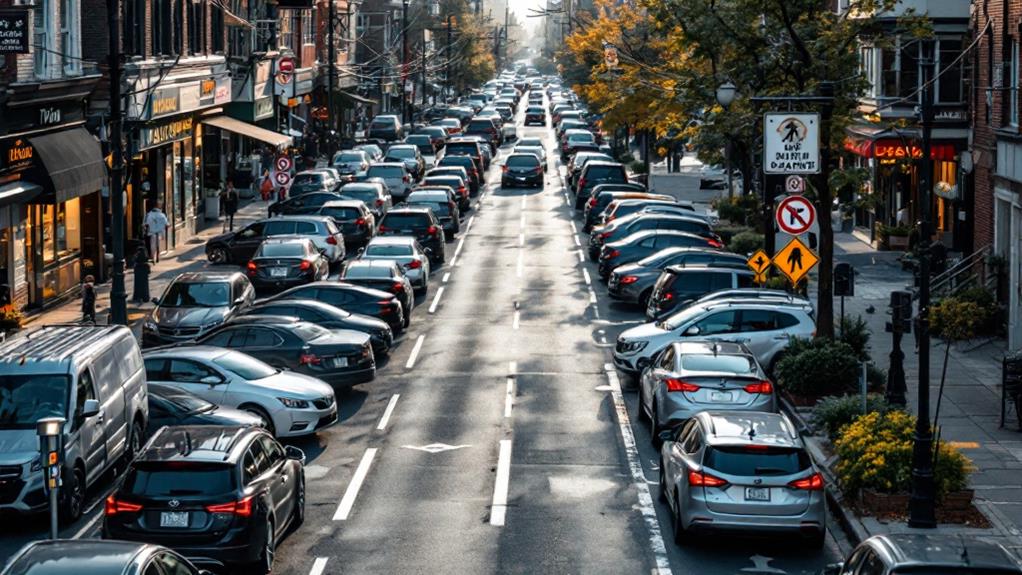
Local communities bear the brunt of high parking costs near NYC's train stations. You'll find that mandatory parking requirements drive up housing costs by as much as 17%, making it difficult for lower-income residents to afford homes in these areas. These parking spots create dead zones around transit hubs, reducing walkability and community engagement.
Surface parking lots spread communities apart, increasing car dependency and contributing to health and environmental disparities. You'll notice that these lots take up useful space that could be used for affordable housing or community amenities. By eliminating parking minimums, NYC has seen a 36% increase in affordable housing units in its Transit Zone.
When you remove these parking requirements, you're incentivizing residents to use public transportation, walk, or bike. This shift reduces disparate climate impacts on communities of color and improves overall air quality. You'll also see more lively, walkable neighborhoods emerge as parking lots are replaced with mixed-use developments and green spaces. By rethinking parking near train stations, you're not just saving money – you're cultivating healthier, more inclusive communities that benefit everyone.
Long-Term vs. Short-Term Parking
When considering parking options near NYC's train stations, you'll need to weigh the pros and cons of long-term versus short-term parking. Long-term parking typically requires a permit and can cost between $5 and $15 per day, while short-term parking is often free on weekends. This price difference can profoundly impact your travel budget, especially if you're planning an extended stay.
For those looking to park overnight or for multiple days, it's essential to research the specific station's policies. Some locations offer outdoor parking, which may require battery maintenance during longer stays. When deciding between long-term and short-term options, consider:
- Your travel duration and frequency
- The total cost of parking and train fares
- The convenience and safety of the parking location
Remember that parking costs and policies vary widely across Metro-North stations. If you're commuting into Manhattan regularly, factor in both parking fees and train fares when calculating your overall travel expenses. By carefully evaluating your needs and the available options, you can choose the most cost-effective and convenient parking solution for your trips to and from NYC.
Technology Solutions for Parking Woes
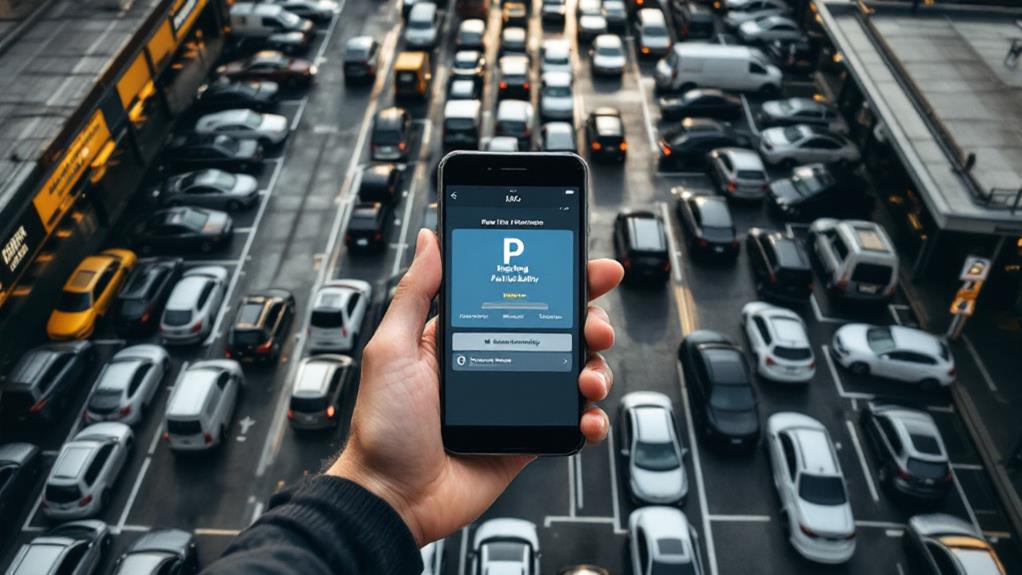
Frustrated by the parking challenges near NYC's train stations? Technology is coming to the rescue with innovative solutions to ease your parking woes. Gone are the days of endlessly circling for a parking spot or fumbling for change at meters.
Apps like SpotHero, ParkMobile, and PayByPhone now allow you to find, reserve, and pay for parking in NYC with just a few taps on your smartphone. These apps often cover both on-street parking and nearby lots, giving you more options than ever before.
Dynamic pricing systems are revolutionizing parking on the street, adjusting rates based on real-time demand to guarantee better availability. License plate recognition technology is making physical parking meters obsolete, streamlining the payment and enforcement process.
Shared parking programs are unlocking previously inaccessible private lots, expanding your parking options near train stations. And when you arrive, parking guidance systems will direct you straight to an open space, saving you time and frustration.
While parking in NYC remains challenging, these tech solutions are making it easier to navigate the concrete jungle's notorious parking terrain. Embrace these tools to take the stress out of your commute.
Future of Transit-Oriented Development
As New York City grapples with its transit future, the debate over transit-oriented development near train stations has intensified. The proposed rezonings around new Bronx Metro-North stations exemplify this shift, aiming to create denser, more walkable communities with increased housing and reduced car dependency.
However, you'll find a disconnect between City Planning's vision and developers' actions. Despite data suggesting most commuters won't drive to these stations, developers insist on building extensive parking facilities. This resistance to change highlights the challenges in implementing transit-oriented development.
The future of transit-oriented development in New York hinges on:
- Overcoming the ingrained car culture
- Aligning developer interests with sustainable urban planning
- Educating communities about the benefits of reduced parking
You'll see that the elimination of parking mandates, a key component of Mayor Adams' "City of Yes" plan, is facing pushback from council members and developers alike. This tension between promoting car-free lifestyles and accommodating perceived parking needs will shape the future of New York's urban terrain, potentially determining the success of new transit-oriented developments and their impact on the city's transportation ecosystem.
